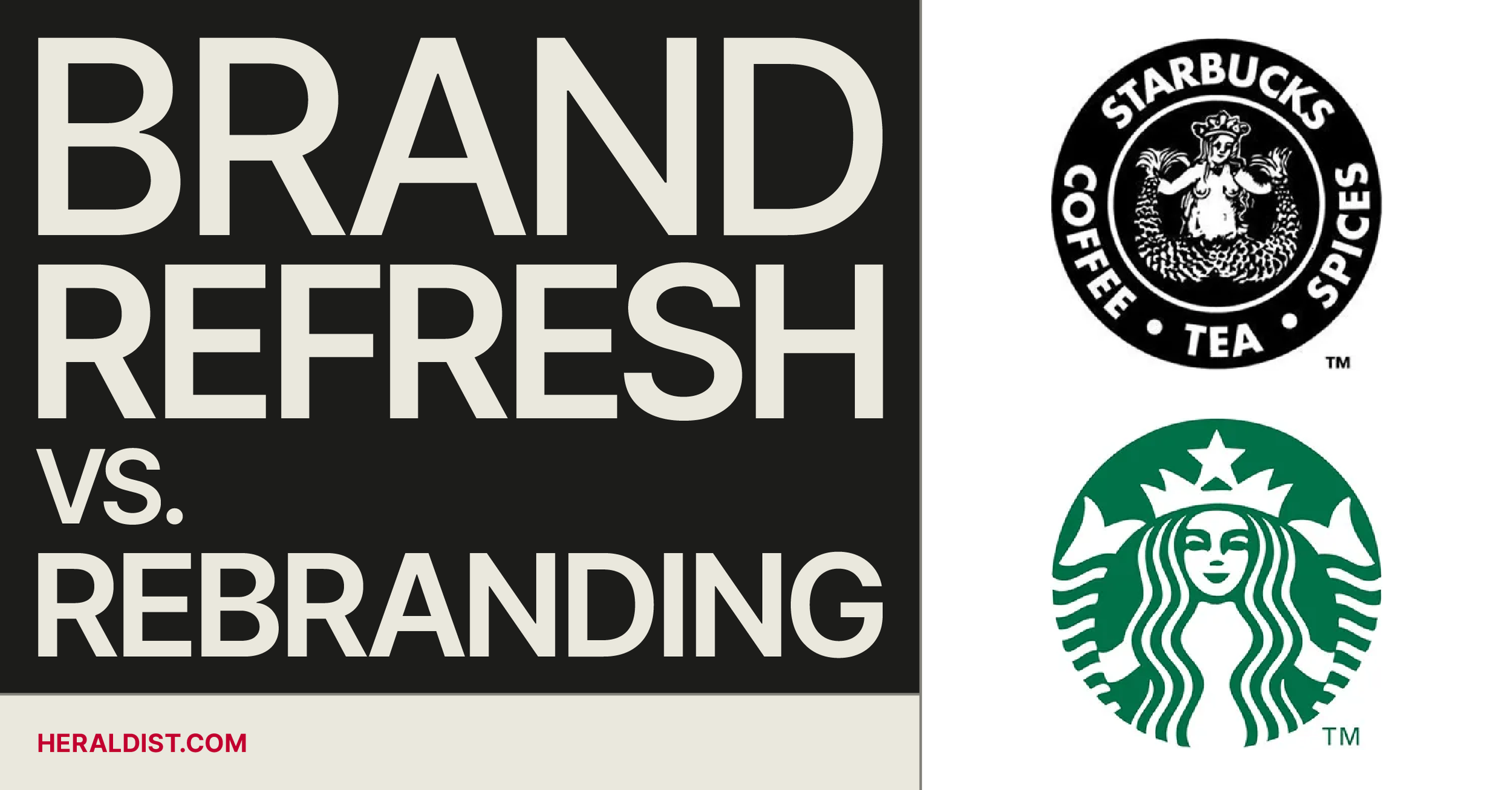Brand Refresh vs. Rebranding
When and How to make the right move
Your business is never just about its products/services, customers, market share, or financials. That is only 50%. The other 50% is your brand, how people perceive you, and the imprint you leave in the minds of your audience. And a strong branding can take a business from ordinary to extraordinary in the glimpse of a digital ad.
So what if we tell you a great brand identity is not set in stone? 74% of the S&P 100 companies have refreshed or rebranded their business in the first seven years.
Life everything else in life, perceptions change and only businesses strong enough to adapt thrive. You have to always stay in the conversation, be relevant, and be unique. We see examples all around us from other brands upgrading logos, changing positionings, addressing other audiences and we get confused as to the differences between these levels of brand revivals.
What is a Brand Refresh?
It is a tactical approach for adjusting certain brand characteristics to be more relevant for your audience. Tweaking how your company looks, feels, and sounds to your customers. This could mean a change in brand voice, visual identity, and packaging. It is like a new coat of paint, enhancing what the brand has built in terms of awareness and loyalty. You are not redefining your brand, but challenging outdated perceptions.
What is Rebranding?
Rebranding, on the other hand, is a strategic manoeuvre to influence and change the current brand positioning and perception. It can be risky when done wrong, or a thunderbolt of new life and relevance for a stagnant business when correctly showcasing your evolution. A rebrand allows you to take on a new voice, a fresh look and reach new audiences; it can go as far as changing the brand name or logo entirely, dismissing some products, and launching new ones. It shakes the current brand associations from top to bottom.
How do you know which one you need?
You might need a brand refresh if:
You have an inconsistent image, playing with too many visual or voice elements, confusing audiences, hence weakening brand recognition, conveying the wrong brand associations, and confusing your customers;
You are changing: you're launching new products and services or taking on new marketing channels or simply put, your brand identity no longer perfectly mirrors your brand promise;
You are outdated in comparison to top players in your market, you get lost in the crowd so you do not convey uniqueness and timeliness;
Your audience has changed since you developed your brand identity and you are no longer appealing, convincing, or memorable to them.
A successful brand refresh needs to come from a good understanding of the current needs of the company and the audience, never based on subjectivity and fleeting biases, but on research and realities to be efficient and fruitful for the business. If rooted in true strategic thinking, even the slightest, but right changes (maybe a color, maybe a font) can make a true difference and upgrade how you are perceived.
You might need a rebranding if:
The industry expectations changed
The market is in need of new products and services
The competition is growing and you do not stand out anymore
Your voice and image feel out of date
Your audience personas changed
You want to enter new markets or expand your scope
Your marketing efforts are all falling short
A successful rebranding requires an honest and informed look at your company mission and vision in relation to the market, competitors, and customers, based on research, analyses, and a consistent strategy, because it is not just about some visual tweaks. It is about the courage to evolve beyond your current, comfortable positioning into a more timely space.
Managing how your brand is perceived and having the guts to act on your insights and vision to constantly adapt and remain relevant takes strategic, creative, and even operational decisions that cannot come overnight. But these decisions for revitalizing the brand put you on a certain path for customer love, market relevance, and business success.
To end with a relevant case study and one of my favorite recent brand stories: see how a big tech company like Slack aptly identified the need for a brand refresh because their first logo was no longer modern and because the identity system was too complicated to be displayed correctly in more mediums. The need for consistency and recognisability drove the creative process.
By Alexandra Florescu

